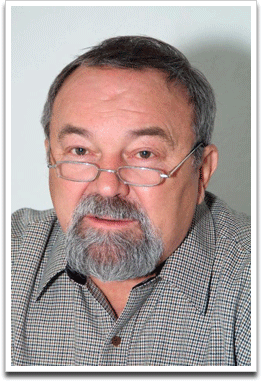Shock and Blast Waves: Propagation, Reflection and Interaction in Memory of Prof. Vladimir N. Uskov
A special issue of Fluids (ISSN 2311-5521).
Deadline for manuscript submissions: closed (30 April 2024) | Viewed by 2672

Special Issue Editor
Interests: supersonic jet flows; shock interactions; blast and shock waves; blast protection
Special Issues, Collections and Topics in MDPI journals
Special Issue Information
Dear Colleagues,

Prof. Vladimir N. Uskov
The content of this Special Issue is, in many ways, a continuation of the research conducted by Vladimir Uskov (1941-2014), Professor of Baltic State Technical University “VOENMEH” and St. Petersburg State University. He was an outstanding scientist in the field of supersonic jet flows and interactions of gas-dynamic discontinuities.
Since 1966, V.N. Uskov and his colleagues have carried out experimental research into supersonic jet flows and their shock wave structure, especially at interactions with obstacles. Studies of the shock wave noise of supersonic gas jets and other aero-acoustic effects were continued in the 1980s and 1990s. Prof. V.N. Uskov, together with his colleagues, developed a method of applying supersonic jets’ oscillation modes and other shock-wave effects to powder metallurgy problems. Since 1975, he has been the author of 40 inventions.
At the end of the 1970s, V.N. Uskov began his studies of the interactions of shock waves and other gas-dynamic discontinuities. The monograph “The Interaction of Stationary Gasdynamic Discontinuities” (1995), written by Prof. V.N. Uskov and his younger colleagues Dr. A.L. Adrianov and Dr. A.L. Starykh, presents the main currently known cases of shock reflection, interactions, and refraction, as well as the theory of triple-shock configurations.
Prof. Uskov was an excellent teacher and dearest friend to many researchers, and we hope that this Special Issue will act as a fitting way to honor such a prominent scientist.
Dr. Mikhail V. Chernyshov
Guest Editor
Manuscript Submission Information
Manuscripts should be submitted online at www.mdpi.com by registering and logging in to this website. Once you are registered, click here to go to the submission form. Manuscripts can be submitted until the deadline. All submissions that pass pre-check are peer-reviewed. Accepted papers will be published continuously in the journal (as soon as accepted) and will be listed together on the special issue website. Research articles, review articles as well as short communications are invited. For planned papers, a title and short abstract (about 100 words) can be sent to the Editorial Office for announcement on this website.
Submitted manuscripts should not have been published previously, nor be under consideration for publication elsewhere (except conference proceedings papers). All manuscripts are thoroughly refereed through a single-blind peer-review process. A guide for authors and other relevant information for submission of manuscripts is available on the Instructions for Authors page. Fluids is an international peer-reviewed open access monthly journal published by MDPI.
Please visit the Instructions for Authors page before submitting a manuscript. The Article Processing Charge (APC) for publication in this open access journal is 1800 CHF (Swiss Francs). Submitted papers should be well formatted and use good English. Authors may use MDPI's English editing service prior to publication or during author revisions.
Keywords
- shock and blast waves
- shock/blast interactions
- regular/Mach reflection
- shock focusing
- shock wave systems
- blast protection
- supersonic jet flows
- high supersonic flight
- heat protection





